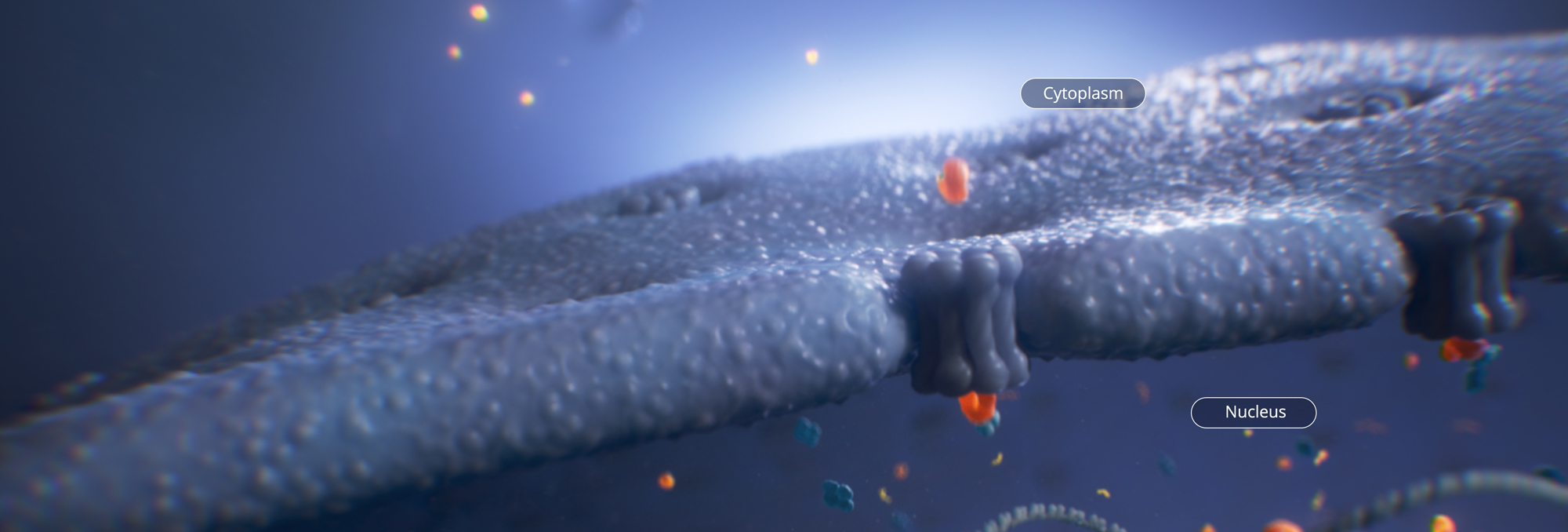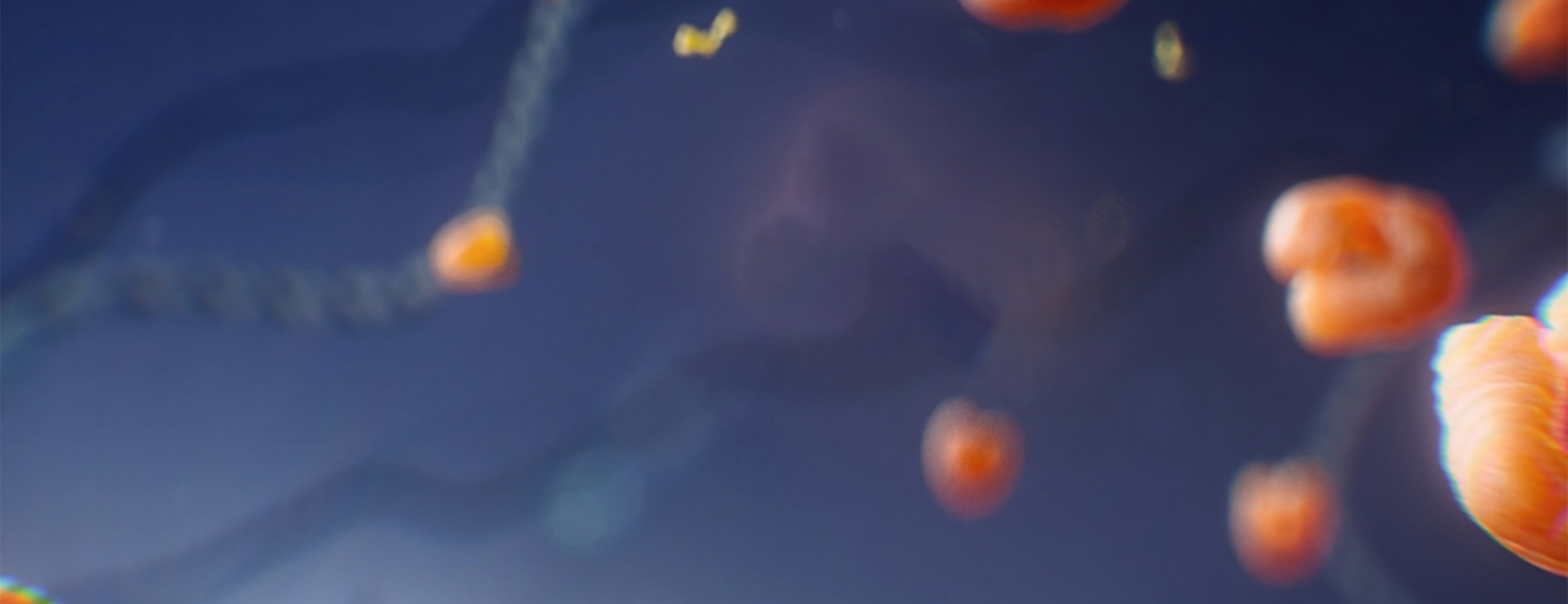XPO1 inhibition has the potential to engage the cell’s innate ability to fight cancer1-5
The impact of XPO1 inhibition has been shown in two tumor types—and is under investigation in several others.3-6
How does XPO1 inhibition help fight cancer?

XPO1 contributes to normal cellular function
It moves cellular factors out of the cell nucleus
XPO1 is a nuclear export protein responsible for the transport of cargoes between the cell nucleus and cytoplasm.7-12 Some of these cargoes can be associated with hallmarks of cancer.11-13

In many cancer types, XPO1 may become dysregulated
It can also affect other ways cells normally fight some cancers
Dysregulated XPO1 can also help cancer cells evade detection and thrive by impacting a range of factors that normally help suppress cancer.6,11-15

Targeted XPO1 inhibition has been shown to restore the cell’s innate ability to fight some cancers
This is done by increasing the accumulation of tumor suppressor proteins and oncoprotein mRNAs within the nucleus and regulation of several pathways that are important to cancer development and progression.1,2,11,13
Karyopharm is the recognized leader in XPO1 inhibition
Karyopharm is committed to continued research into the promise and potential of XPO1 inhibition in several hematologic and solid tumors.3-5
View the Targeting XPO1 in Cancer video
Learn MoreReferences
- Das A, et al. Exp Hematol Oncol. 2015;4:7. doi:10.1186/s40164-015-0002-5.
- Gandhi UH, et al. Clin Lymphoma Myeloma Leuk. 2018;18(5):335-345. doi:10.1016/j.clml.2018.03.003.
- ClinicalTrials.gov Identifier: NCT02649790. https://clinicaltrials.gov/ct2/show/NCT02649790. Accessed November 28, 2023.
- ClinicalTrials.gov Identifier: NCT05611931. https://clinicaltrials.gov/ct2/show/NCT05611931. Accessed November 28, 2023.
- ClinicalTrials.gov Identifier: NCT04562389. https://clinicaltrials.gov/ct2/show/NCT04562389. Accessed November 28, 2023.
- Azizian NG, et al. J Hematol Oncol. 2020;13(1):61. doi:10.1186/s13045-020-00903-4.
- Fornerod M, et al. Cell. 1997;90(6):1051-1060. doi:10.1016/s0092-8674(00)80371-2.
- Dong X, et al. Nature. 2009;458(7242):1136-1141. doi:10.1038/nature07975.
- Stade K, et al. Cell. 1997;90(6):1041-1050. doi:10.1016/s0092-8674(00)80370-0.
- Taylor J, et al. Cancer Discov. 2019;9(10):1452-1467. doi:10.1158/2159-8290.CD-19-0298.
- Sun Q, et al. Signal Transduct Target Ther. 2016;1:16010. doi:10.1038/sigtrans.2016.10.
- Azmi AS, et al. Nat Rev Clin Oncol. 2021;18:152-169. doi:10.1038/s41571-020-00442-4.
- Balasubramanian SK, et al. Leukemia. 2022;36:601-612. doi:10.1038/s41375-021-01483-z.
- Culjkovic-Kraljacic B, et al. Cell Rep. 2012;2(2):207-215. doi:10.1016/j.celrep.2012.07.007.
- Zhao L, et al. Transl Cancer Res. 2021;10(11):4664-4679. doi:10.21037/tcr-21-1646.

